Advertisement
Remarkable success with simpler novel flap technique
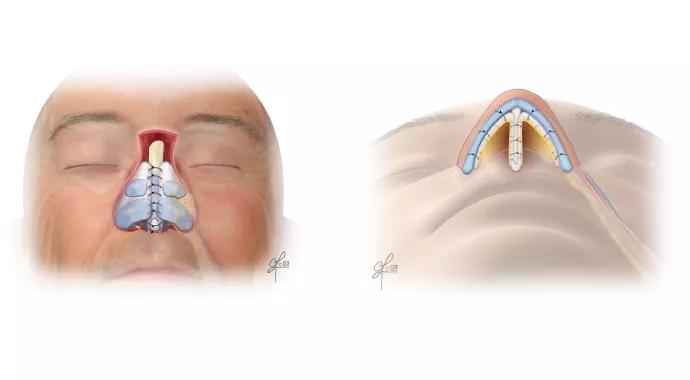
Advertisement
Cleveland Clinic is a non-profit academic medical center. Advertising on our site helps support our mission. We do not endorse non-Cleveland Clinic products or services. Policy
A novel method of complex nasal reconstruction has been developed by facial plastic surgeons in Cleveland Clinic’s Head & Neck Institute, and it promises to reshape the way these reconstructions are performed. Our patients have achieved excellent functional and cosmetic outcomes with less surgery and less morbidity than we see with the traditional surgical approach. The key to this technique is the use of free vascularized fascia lata to reconstruct the nasal lining.
Reconstruction of total or near-total nasal defects is among the most challenging procedures in facial plastic surgery. To achieve a satisfactory result, the nasal lining, framework and external skin must be recreated individually. Moreover, the reconstruction must be accomplished in a way that reproduces the delicate external nasal form while maintaining nasal patency.
The replacement of vascularized nasal lining is the most difficult component of reconstructing a large defect. Traditional methods have involved the use of fasciocutaneous free flaps, particularly radial forearm free flaps. These have proved effective for internal nasal coverage and vascularized support for structural grafts. However, this approach requires several stages that involve sequential placement of the free flap, cartilage grafts and paramedian forehead flap. Furthermore, flap redundancy and thickness typically mandate additional debulking procedures to achieve an aesthetic appearance and patent nasal airway. Given tissue bulk, the latter goal in particular is often elusive.
The use of the anterolateral thigh (ALT) free flap for head and neck reconstruction has increased greatly over the past decade, and many surgeons now prefer this flap for cutaneous and mucosal replacement. Cutaneous perforators within this flap pass through and vascularize the fascia lata, thus allowing for development of a free vascularized fascia flap. We have employed vascularized fascia lata as a thin, pliable tissue for oral mucosal reconstruction, and our success with it spurred us to adopt it for large nasal lining defects.
Advertisement
We have now used free vascularized fascia lata in seven patients who had massive and complex nasal defects. All patients underwent a total or subtotal rhinectomy for cutaneous or mucosal malignancy. Following revascularization of the fascia lata via a microvascular technique, the flap is inset and altered to replace the lining of the nose and septum as required. In contrast to the established staged reconstructive approach, the bony and cartilaginous nasal structure and external skin coverage are then applied over the free flap in the same operative setting. Structure is recreated with harvested septal cartilage, conchal cartilage and/or rib in a manner similar to previously described techniques, and a paramedian forehead flap is used to provide cutaneous color and texture match (Figure 1A-C). A representative case was recently reported by our team in JAMA Facial Plastic Surgery.
Our experience has shown that using free vascularized ALT fascia lata to recreate the nasal lining has several advantages over the standard radial forearm free flap. Our flap provides more quantity and versatility of tissue with less donor-site morbidity. The very thin and well-vascularized flap enables simultaneous replacement of the nasal structure and external skin, thus allowing for more rapid recovery and requiring fewer large revision surgeries. In addition, functional nasal airways can be achieved without further debulking procedures.
Thanks to this significant innovation, our patients have achieved adequate nasal patency with minimal revisions. Given all its advantages, vascularized fascia lata appears to hold great promise for complex nasal reconstructions.
Dr. Fritz is a specialist in facial plastic and reconstructive surgery in the Head & Neck Institute.
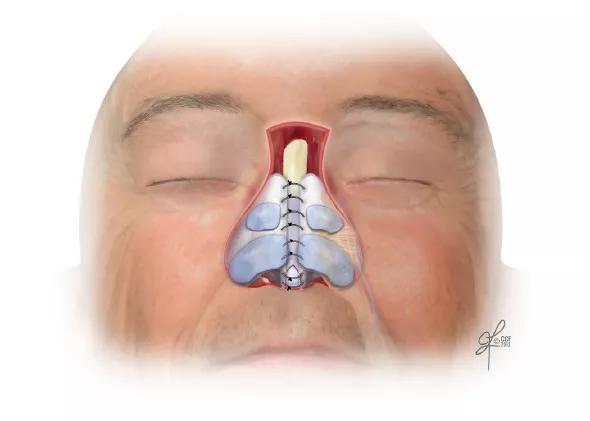
Figure 1A. Illustration depicts the skeletal framework for reconstruction of a total or near-total defect. Septal, costal and/or auricular cartilage is harvested and used to recreate the nasal ala and sidewalls, and a rib graft is used for dorsal and caudal supports. Vascularized anterolateral thigh fascia lata is secured to these grafts, and the vascular pedicle is tunneled subcutaneously to the distal facial or angular artery and vein for microvascular anastomosis.

Figure 1B. A harvested rib is carved so that it articulates distally to form an L-shaped strut. The vascularized fascia lata is woven into and suspended around the rib graft to create an underlying nasal lining. Surrounding the grafts with vascularized tissue promotes cartilage and bone graft survival.
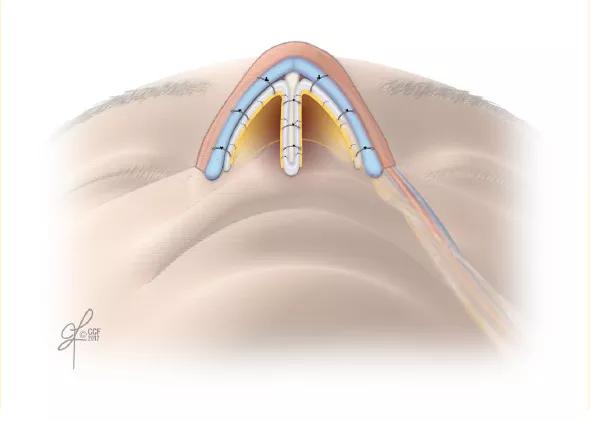
Figure 1C. In a multiple-layer reconstruction, a paramedian forehead flap (red) is used to reconstruct the outer skin cover. Cartilage and bone grafts are placed below the cover (blue and white) to establish the nasal framework. The vascularized fascia lata recreates the nasal lining, and a split-thickness skin graft is often used to cover the fascia at the reconstructed nasal vestibule.
Advertisement
Advertisement

Expanded patient criteria and surgical advances mean more patients can benefit
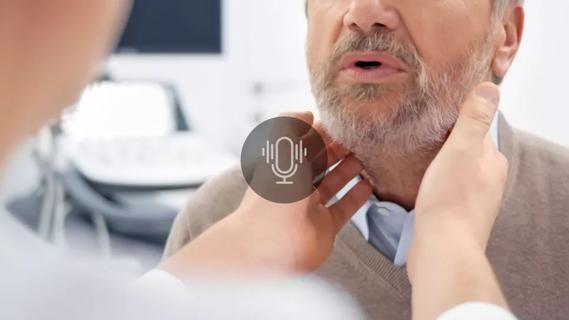
Expert advocates for a stepladder approach
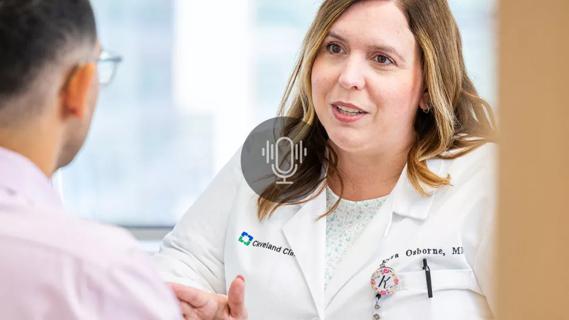
With a wide scope of skills, comprehensive otolaryngologists care for patients of all ages in the community

A comprehensive evaluation and multidisciplinary care are key to caring for patients with vestibular disorders

By using free vascularized fascia lata flaps, surgeons can overcome some of the aesthetic and functional challenges historically associated with nasal reconstruction
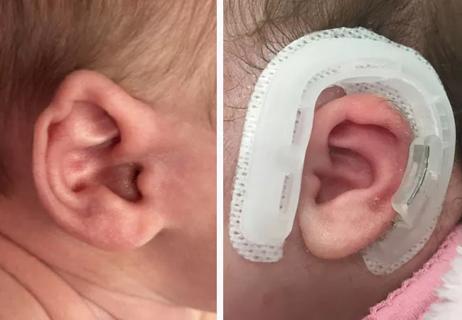
Restoring the ear to normal anatomy
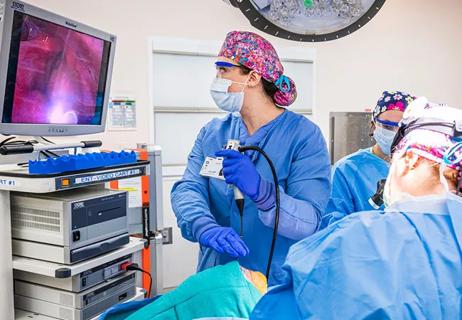
Personalized care enhances patient experience, optimizes voice quality

By changing the patient access flow, patients are able to see the right provider faster, and surgeons are able to spend more time in the OR and less time in clinic